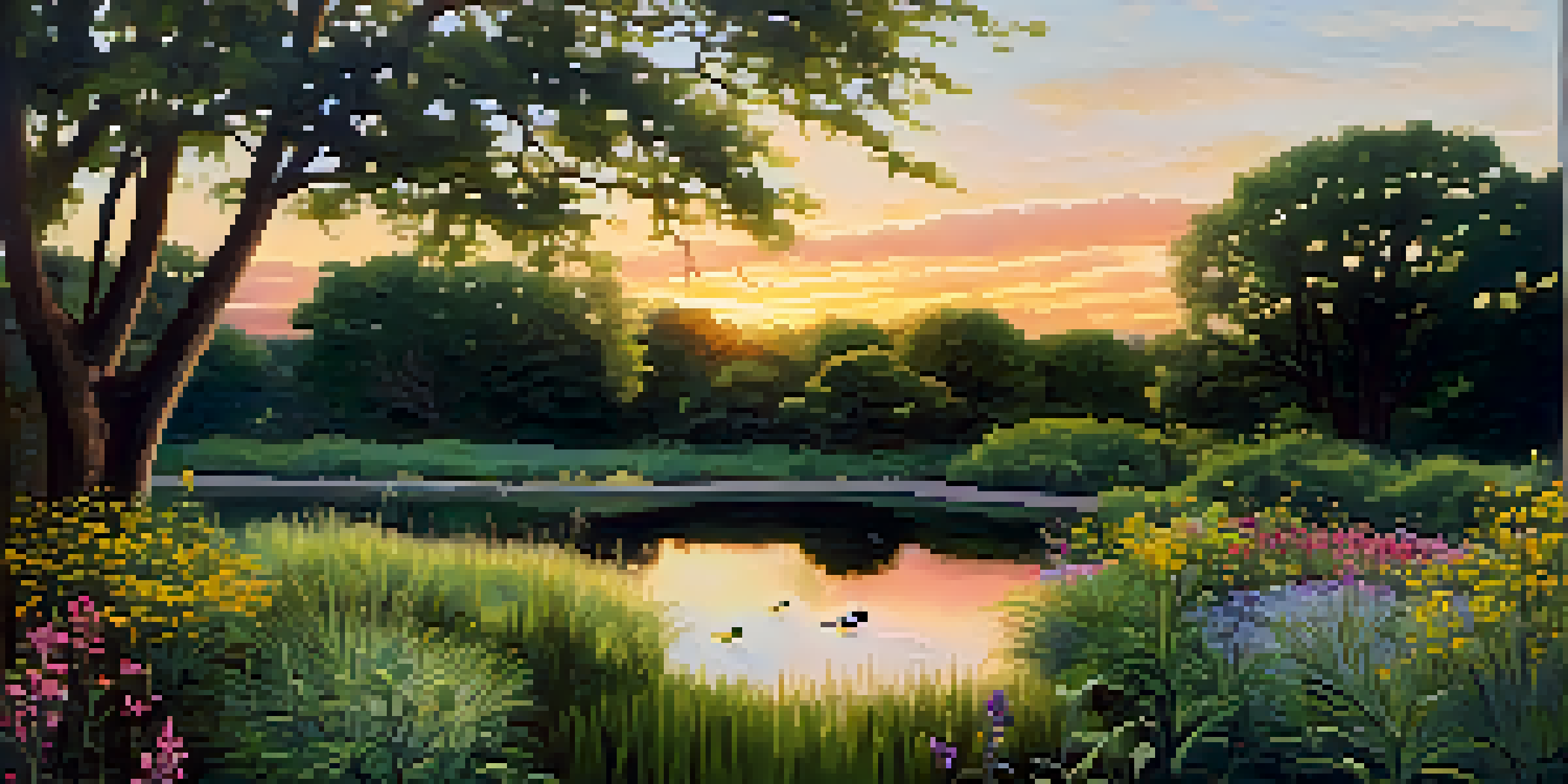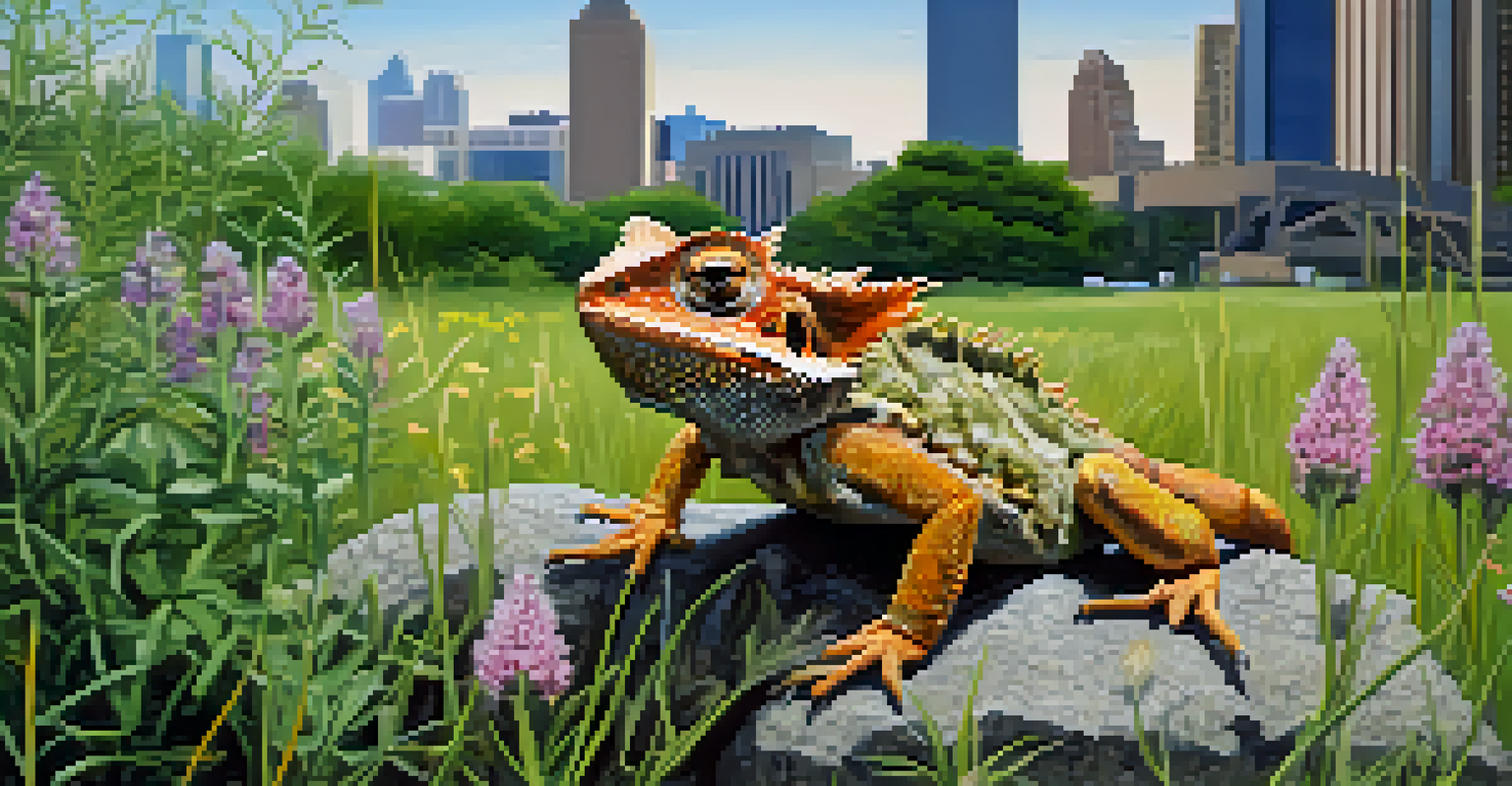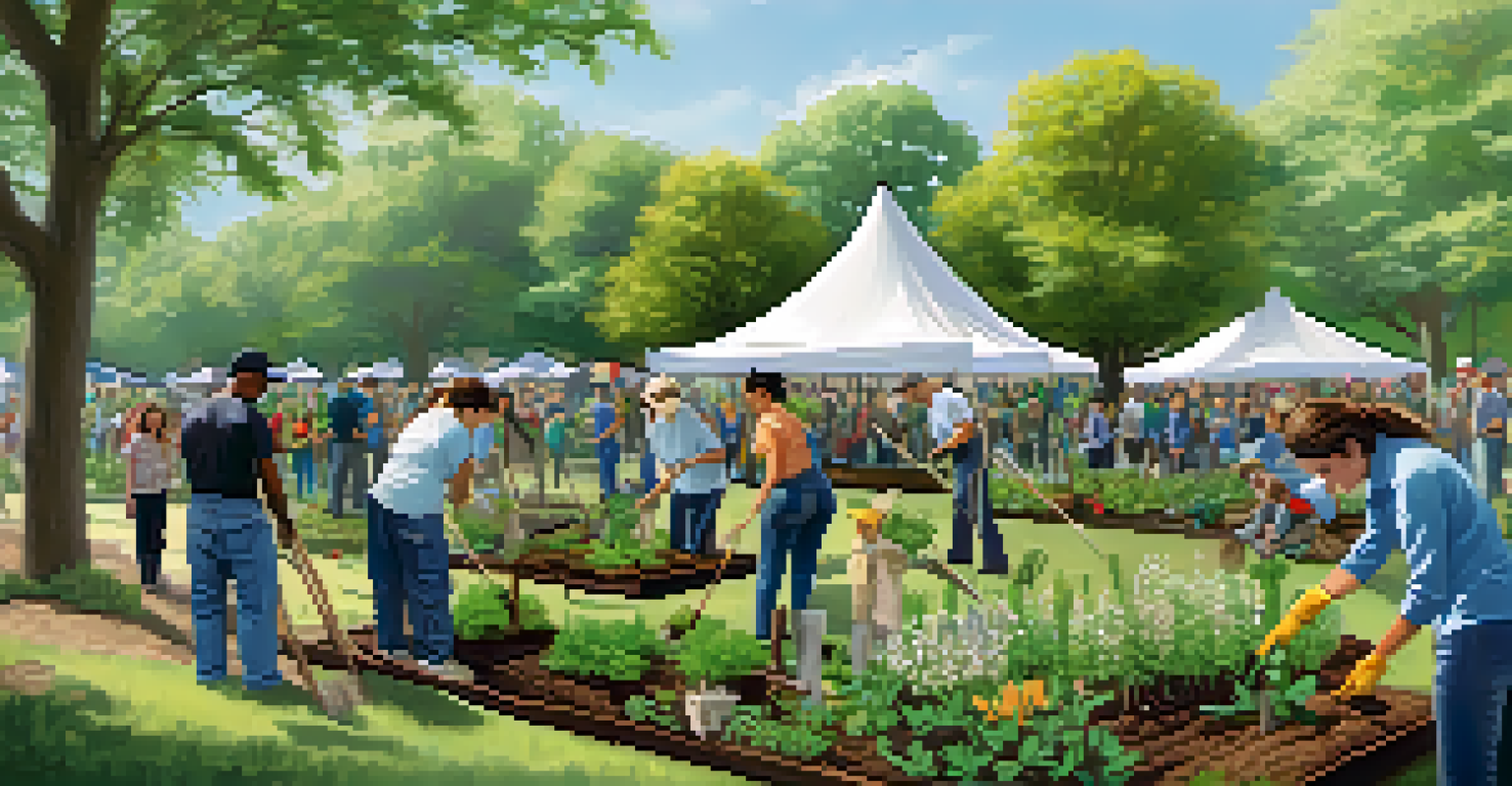Endangered Species of Dallas: Conservation Challenges

Overview of Endangered Species in Dallas
Dallas, Texas, is home to a variety of species, some of which are facing the threat of extinction. These endangered species include unique birds, mammals, and reptiles that play vital roles in their ecosystems. The loss of these species can disrupt local biodiversity and affect other wildlife, including those we see regularly in our backyards.
The environment is where we all meet; where we all have a mutual interest; it is the one thing all of us share.
Among the most notable endangered species in the Dallas area are the Black-capped Vireo and the Texas Horned Lizard. Each of these species has specific habitat needs that are increasingly compromised by urban development, pollution, and climate change. Understanding their plight is crucial for fostering effective conservation efforts and raising public awareness.
As we delve into the conservation challenges faced by these species, we can also reflect on our role in protecting the environment. Every small action counts, from supporting local conservation initiatives to simply being mindful of our ecological footprint.
Urban Development: A Major Threat
Urban development in Dallas is one of the primary threats to endangered species. As the city expands, natural habitats are often destroyed to make way for new homes, roads, and commercial spaces. This not only displaces animals but also fragments their habitats, making it difficult for species to find food and mates.

For example, the expansion of urban areas has significantly reduced the habitats of the Black-capped Vireo, which relies on specific types of scrubland for nesting. When these areas are developed, the birds lose their homes and struggle to survive. This illustrates how urban growth can have a direct and adverse impact on local wildlife.
Urban Development Threatens Wildlife
As Dallas expands, natural habitats are destroyed, endangering species like the Black-capped Vireo.
It's essential for city planners and developers to consider wildlife conservation in their projects. Implementing green spaces and maintaining natural corridors can help mitigate some of these impacts, allowing both urban and wildlife populations to coexist.
Pollution and Its Effects on Wildlife
Pollution is another significant challenge facing endangered species in Dallas. Water pollution from runoff, air pollution from traffic, and chemical waste can all harm local wildlife. For instance, toxic substances can contaminate water sources, which are crucial for species like the Texas Horned Lizard.
In every walk with nature one receives far more than he seeks.
In addition to direct health impacts, pollution can also disrupt reproductive patterns in wildlife. Chemicals in the environment can lead to lower fertility rates and even alter the behavior of certain species, making them less likely to thrive. This highlights the interconnectedness of pollution and wildlife health.
Raising awareness about pollution and advocating for cleaner practices can play a vital role in protecting endangered species. Simple actions like reducing plastic use and supporting local clean-up initiatives can collectively make a significant difference.
Climate Change: A Growing Concern
Climate change poses an ever-increasing threat to endangered species in Dallas and beyond. As temperatures rise and weather patterns shift, many species find it difficult to adapt. This can lead to habitat loss, food scarcity, and increased vulnerability to diseases.
For example, the changing climate can affect the availability of insects, which are a food source for many birds, including the Black-capped Vireo. If these birds cannot find enough food during breeding season, their populations could decline even further. This illustrates how interconnected environmental factors can impact species survival.
Pollution Harms Local Species
Water and air pollution negatively impact wildlife health and reproductive patterns in endangered species.
To combat climate change, collective efforts are essential. Communities can engage in sustainable practices, support renewable energy initiatives, and advocate for policies that protect the environment to create a healthier ecosystem for all species.
Community Involvement in Conservation Efforts
Community involvement is crucial for successful conservation efforts in Dallas. Local residents can play a significant role in preserving endangered species through education, advocacy, and active participation in conservation programs. Awareness campaigns can help inform the public about the challenges these species face and how they can help.
Volunteering for local conservation organizations, participating in citizen science projects, or simply spreading the word about endangered species can make a meaningful impact. By working together, communities can create a strong network of support for wildlife conservation.
Additionally, fostering a love for nature and wildlife in younger generations is essential. Educational programs in schools can inspire children to appreciate the environment and motivate them to become future conservationists.
Successful Conservation Programs in Dallas
Dallas has seen some success with various conservation programs aimed at protecting endangered species. Initiatives like habitat restoration projects and breeding programs have shown positive results for certain species. For instance, local organizations have worked to restore native plant habitats that support endangered birds and insects.
These efforts not only benefit wildlife but also enhance the quality of life for Dallas residents. Green spaces contribute to cleaner air, provide recreational opportunities, and foster community engagement. Successful conservation programs often create a win-win situation for both people and wildlife.
Community Involvement is Key
Local residents can significantly contribute to conservation efforts through education, advocacy, and active participation.
Sharing these success stories can inspire others to get involved and support ongoing conservation efforts. When communities see the tangible benefits of protecting their local ecosystems, they are more likely to join the cause.
The Role of Policy in Wildlife Protection
Policy plays a critical role in the protection and conservation of endangered species in Dallas. Local, state, and federal laws can create frameworks for habitat protection, wildlife management, and funding for conservation initiatives. Effective policies can help ensure that endangered species receive the support they need to survive.
For example, zoning regulations can limit development in critical habitats, while wildlife corridors can be established to facilitate safe animal movement. Advocating for strong environmental policies can lead to significant changes that benefit both wildlife and the community.

It's important for citizens to stay informed about local legislation and engage with policymakers. By voicing their concerns and supporting conservation policies, residents can help shape a future that protects endangered species in Dallas.
How You Can Help Protect Endangered Species
Every individual has the power to contribute to the protection of endangered species in Dallas. Simple actions like planting native plants, reducing water usage, or participating in local clean-up events can have a positive impact. These small efforts accumulate and can lead to significant change over time.
Additionally, supporting local conservation organizations through donations or volunteering can further conservation efforts. Many groups work tirelessly to protect wildlife and can use the community's help to achieve their goals. Your involvement can help ensure that future generations will have the opportunity to enjoy the rich biodiversity of Dallas.
Finally, spreading awareness about endangered species and their challenges can inspire others to take action. Sharing information on social media or engaging in conversations with friends and family can help create a community that values and protects its natural heritage.